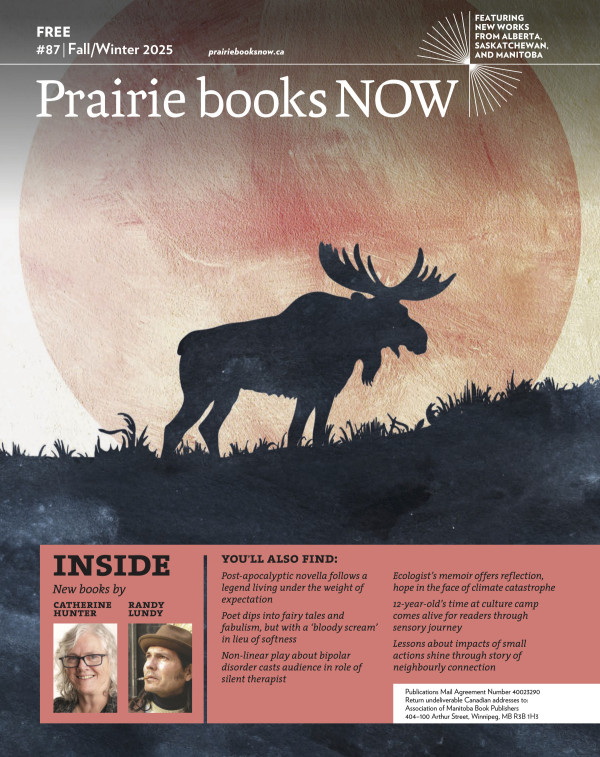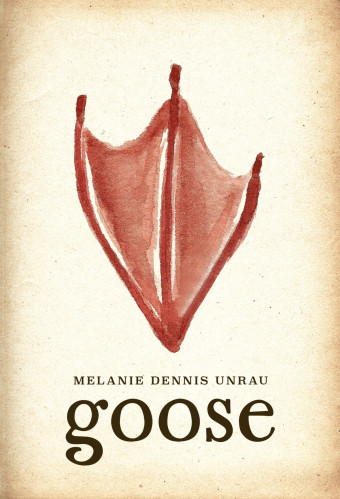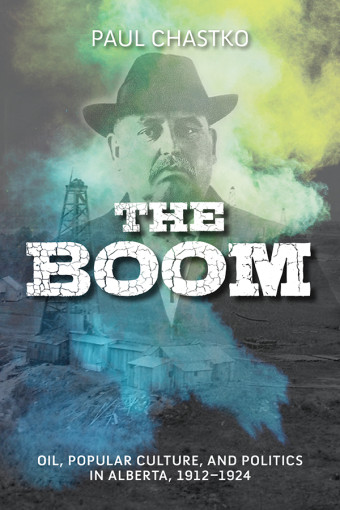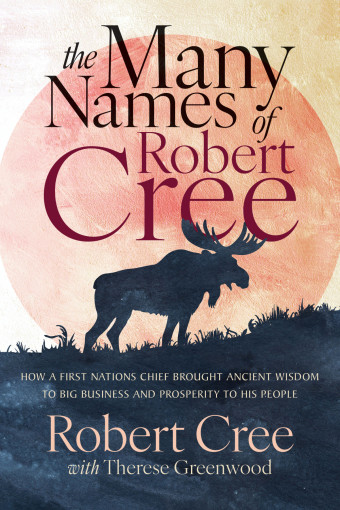For over 100 years people have converged on the city of Calgary for the Calgary Stampede for 10 days in July. Books celebrating the centennials of two Stampede traditions – chuckwagon racing and pancake breakfasts – are being published this year.
Glen Mikkelson, the author of The Rangeland Derby: 100 Years of Chuckwagon Racing at the Calgary Stampede, looks forward to the Stampede more than Christmas.
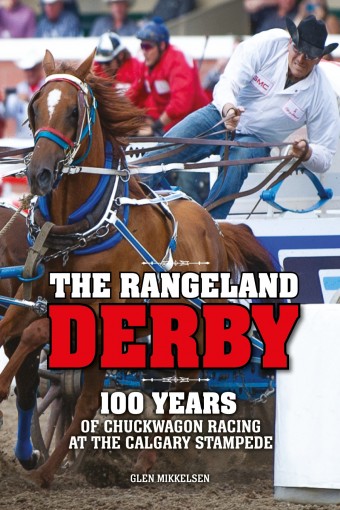
- The Rangeland Derby
- Glen Mikkelsen
- Folklore Publishing
- $29.95 Paperback, 352 pages
- ISBN: 978-17-73110-13-4
“The Stampede encompasses summer, friendship, laughter, energy, cowboys and cowgirls, and wannabe cowboys and cowgirls,” he says. “Ultimately, it is a tear-inducing, friend-making, ‘Yahoo!’-hollering 10 days of great fun!”
His love of chuckwagon racing started early, when his parents took him to the Stampede. “I was a child, just old enough to walk the grounds,” he recalls. “Our family was walking amidst the barns or midway, next to the old Stampede racetrack. Then they came. With a roar, 32 horses, 20 cowboys, and four chuckwagons came yelling, galloping, and plunging past.”
Mikkelsen continues, “I do not remember the specifics, but I do remember the feeling. I was entranced by the sheer wonderment of that kinetic energy. The sounds. The drumming hooves in the dirt. The rattling of the wooden wagons.”
The Rangeland Derby covers the history of chuckwagon racing from its origins in trail rides of the late 19th century through 10 decades of these races at the Calgary Stampede, and the attractively-designed book includes a generous assortment of photographs, both contemporary and historical.
With his love of the races, the author took considerable joy from the research for this book, particularly his discovery of newspaper articles covering the races in the 1920s, 1930s, and 1950s. “In the 1920s and ’30s, the races were brand new. The cowboys and organizers were figuring out the rules together, and there was so much excitement and enthusiasm written into the articles,” he says.
“The 1950s was the decade of Roy Rogers and Gene Autry. The mythical cowboy was everywhere in pop culture. And the Stampede, and chuckwagon racing, received heightened attention during that decade.”
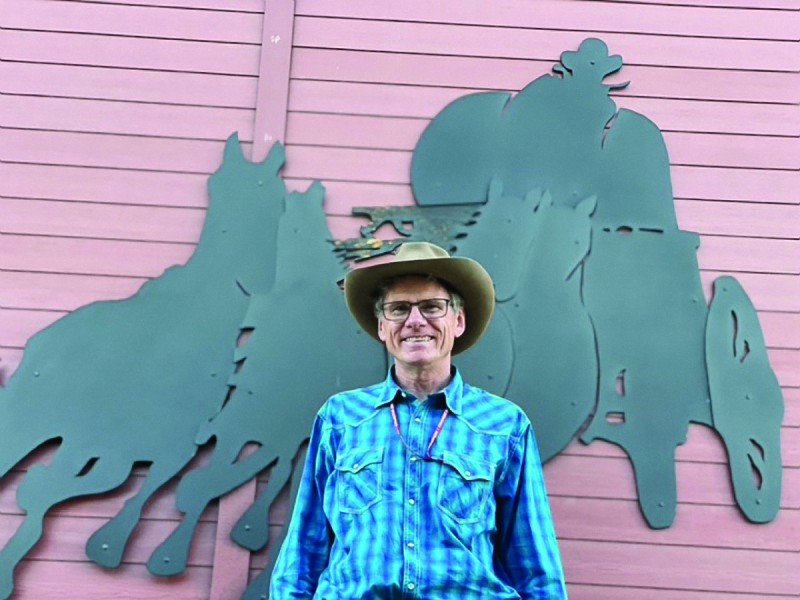
Chuckwagon racing is such an exhilarating event, and so writers and journalists of the era relished the exciting task of writing about the event for people who couldn’t attend in those days before video footage replays.
Mikkelsen sees the consistent bond the chuckwagon families have with their horses – “their racing partners” – as particularly special. “The families have made significant sacrifices, mostly unseen by spectators, to nourish, train, and race with some of the fastest horses on the planet,” he says.
“With so few people professionally racing chuckwagons, they are some of the most special families in the world.”
Family is also at the heart of the other 100-year-old tradition being commemorated in a book this year.
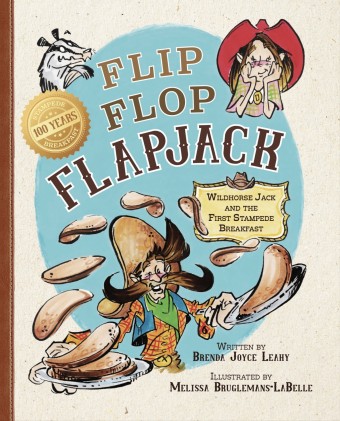
- Flip Flop Flapjack
- Brenda Joyce Leahy, Melissa Bruglemans-LaBelle (Illustrator)
- Red Barn Books Inc.
- $17.99 Paperback, 32 pages
- ISBN: 978-19-89915-11-0
The picture book Flip Flop Flapjack! Wildhorse Jack and the First Stampede Breakfast by Alberta-based author Brenda Joyce Leahy, illustrated by Melissa Bruglemans-LaBelle, tells the story of the first pancake breakfast at the Calgary Stampede, held in 1923 by “Wildhorse” Jack Morton out of the back of his chuckwagon.
Growing up, Leahy heard stories of her grandfather, who died before she was born. Leahy decided to tell the story through the eyes of Jack’s daughter, Leahy’s mother.
“My mother, Frances (‘Frankie’) lived a long and full life, and died at 101 years of age; she was seven when the first breakfast was created, the perfect age through which to tell this story,” says Leahy.
“When the 100th anniversary of the 1923 Stampede pancake breakfast was approaching, I thought the timing was right to tell the story to a wider audience.”
Leahy also wanted to correct the historical record – some articles that she came across said her grandfather was a young cowboy “down on his luck” in 1923, when, says Leahy, “Jack was actually in his 40s, a father to five children, and at the height of his land and cattle holdings. It’s time to correct those mistakes.”
In addition to founding the free pancake breakfast, “Wildhorse” Jack competed for many years in many of the rodeo events, rode in the parades with his family and his pet badgers, and supplied livestock for the rodeo events, including the bucking broncs. The author wanted to tell this story for her grandchildren (Jack’s great-great grandchildren), so a picture book was her choice of genre.
While the Calgary Stampede intersects with Leahy’s family history, she also recognizes its wider significance. “The Calgary Stampede is a celebration of western history and culture, and is uniquely Calgarian in many ways,” she says. “Its core values are ‘western hospitality, integrity, and commitment to community,’ values I can honour as well.”
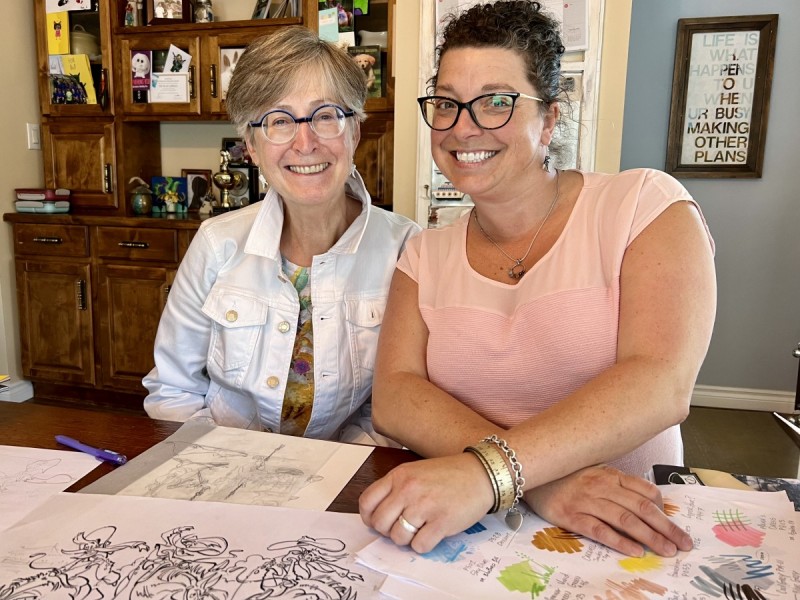
Joyce Leahy and Melissa Bruglemans-LaBelle
Alberta-born-and-raised illustrator Bruglemans-LaBelle was thrilled to work on Flip Flop Flapjack! after a career of commissioned works of art, wall murals, signs, and window painting. “This children’s book project was my opportunity to finally do what my younger self always wanted to do,” she says. “To finally honour that ‘someday’ promise.”
Bruglemans-LaBelle was instantly smitten upon hearing stories about “Wildhorse” Jack Morton. After doing some research, she found, she says, “Many of the stories seemed so wild and dangerous, so crazy and ultimately comical that it was hard to believe that Jack Morton was actually real, that he wasn’t a work of pure fiction.”
Her vision for Jack’s features emphasized certain physical features to reflect his larger-than-life story. “I wanted Jack to be rather tall and strong looking. I gave him height by making his legs almost two-thirds of his entire body (minus his cowboy hat) and [made] his brute strength especially visible by giving him a rather broad chest, forearms, and hands,” she explains. In addition, his outrageously oversized moustache gives him a bold and confident look, which is softened by his warm smile and his expressive eyebrows.
Interestingly, one of Leahy’s favourite Stampede events is the chuckwagon racing (“I imagine what it might have been like back in 1923,” she says), and one of Mikkelson’s favourite parts is “the hospitality around the city every morning at all the pancake breakfasts.”
Whether eating breakfast or watching chuckwagon races with bated breath, family and friends find an easy camaraderie. “The Calgary Stampede has become a special gathering place that hosts well over a million guests from all over the world, allowing us all to connect through a celebration of our western heritage,” says Bruglemans-LaBelle.
“It’s a rare and special experience to be a part of something like that.”

